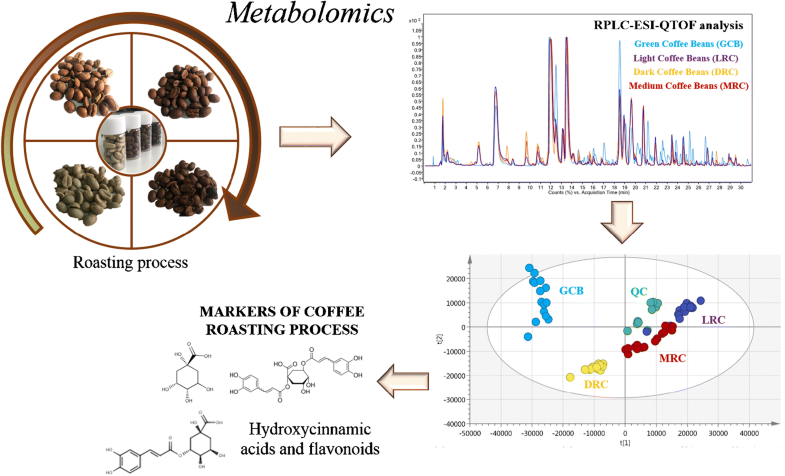Analytical and Bioanalytical Chemistry ( IF 4.3 ) Pub Date : 2018-10-22 , DOI: 10.1007/s00216-018-1405-z Raquel Pérez-Míguez , Elena Sánchez-López , Merichel Plaza , María Castro-Puyana , María Luisa Marina
In this work, a non-targeted metabolomics approach based on the use of reversed-phase liquid chromatography coupled to a high-resolution mass spectrometer has been developed to provide the characterization of coffee beans roasted at three different levels (light, medium, and dark). In this way, it was possible to investigate how metabolites change during the roasting process in order to identify those than can be considered as relevant markers. Twenty-five percent methanol was selected as extracting solvent since it provided the highest number of molecular features. In addition, the effect of chromatographic and MS parameters was evaluated in order to obtain the most adequate separation and detection conditions. Data were analyzed using both non-supervised and supervised multivariate statistical methods to point out the most significant markers that allow group discrimination. A total of 24 and 33 compounds in positive and negative ionization modes, respectively, demonstrated to be relevant markers; most of them were from the hydroxycinnamic acids family.

ᅟ
中文翻译:

基于反相液相色谱-质谱法的非目标代谢组学方法来评估咖啡烘焙过程
在这项工作中,已经开发了一种基于反相液相色谱和高分辨率质谱仪的非目标代谢组学方法,以表征在三种不同水平(浅色,中等和深色)下烘焙的咖啡豆的特性。 )。通过这种方式,有可能研究烘烤过程中代谢物的变化,从而鉴定出那些可以视为相关标记的代谢物。选择25%的甲醇作为萃取溶剂,因为它提供了最多数量的分子特征。此外,对色谱和质谱参数的影响进行了评估,以获得最适当的分离和检测条件。使用无监督和有监督的多元统计方法对数据进行分析,以指出允许进行群体歧视的最重要标记。总共有24种和33种化合物分别处于正电离和负电离模式,被证明是相关的标记物。其中大多数来自羟基肉桂酸家族。

ᅟ


























 京公网安备 11010802027423号
京公网安备 11010802027423号